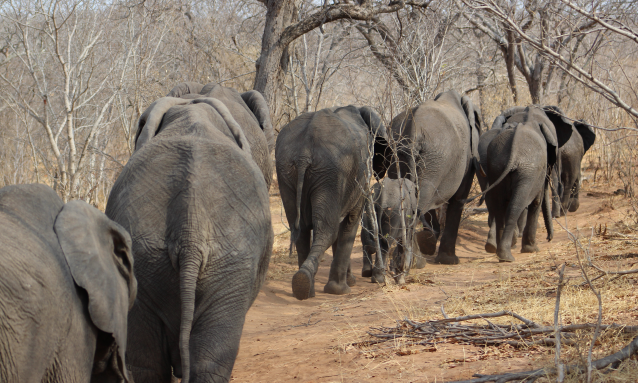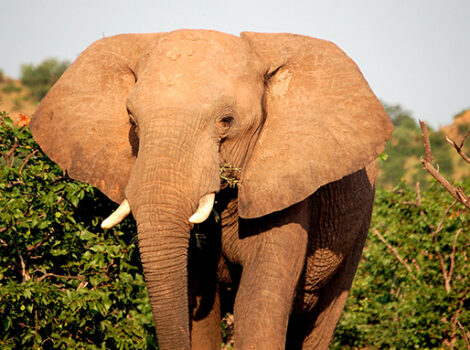
A British Non-Governmental Organisation is working with the Government of Angola to clear mines from one of Africa’s largest and most diverse wildlife areas. One of the goals, aimed at making the region safer for all the animals in the area, is to allow tens of thousands of elephants trapped in neighbouring Botswana to return to their native Angolan habitat.
Drone flying to detect civil war-era mines in natural reserve
The Halo Trust has been one of the leading global organisations working to clear minefields left in the wake of wars in recent decades around the world. In addition to its campaign of clearing some 153 mined areas created during Angola’s 1975-2002 civil war, it is now also focusing on efforts to rid the Kavango-Zambezi Trans Frontier Conservation Area (KAZA) of hidden explosives. That five-country zone is home to the infamous Okavango Delta that boasts some of the world’s most diverse and thriving wildlife. But the abundance of mines in the Angolan sector has made it impossible for migrating elephants in Botswana to make their way back home.
To rectify that, Halo has called in the drones. The NGO is using a fleet of uncrewed aerial vehicles equipped with laser, light detection and ranging tech to locate and defuse mines across a 12-mile corridor through southern Angola. Though only a small part of its wider struggle to clear the entire country and region of mines, the specific objective of the drone-driven project is to allow elephants trapped in Botswana to migrate back to their original Angolan habitat. Their abundance in Botswana has not only started posing serious problems for residents but also led to the Government lifting the ban on hunting the giants in 2019 to reduce their numbers.
Halo believes by using its drones to locate and clear mines in the migratory corridor in southern Angola, such a massacre can be avoided.
Thereafter, thousands of elephants stranded across the border after fleeing civil war violence can return home. Before the war, Angola had a population of over 100,000 elephants; some estimates put that number at less than 3,500 today. Botswana, by contrast, hosts over 130,000 elephants – the largest in Africa – with tens of thousands of those originally from Angola. KAZA as a whole is home to 50% of the world’s elephants.
Elephant bottleneck angers local farmers
Farmers in Botswana have said elephant over-population has led to severe shortages of their natural food sources. They maintain that the lack of food regularly pushes them into farmed areas to feed and in the process, trample and destroy crops. There are also claims of wild elephants occasionally wrecking villages and attacking people, further fuelling their anger.
With Botswana’s elephant numbers continually growing and those in Angola still dropping despite the return of peace, Halo has set a major objective of reopening the migration corridor. By so doing, Halo hopes it will reduce pressure to the south and protect elephants from resumed hunting by permitting them to return safely to where they came from.
“Since 1994, we have destroyed almost 100,000 landmines in Angola. Initially, we focused on removing landmines in regional capitals and towns. Today, our work focuses on rural areas, clearing landmines that have plagued communities for over 30 years,” Halo says of its work in the area, including the new drone innovation.
“By clearing the landmines, Halo can lay the foundation for life, agriculture and eco-tourism to return and thrive, bringing many benefits to over half a million people in Cuando-Cubango Province alone.”
Source: http://dronedj.com/2021/07/05/__trashed-5/



